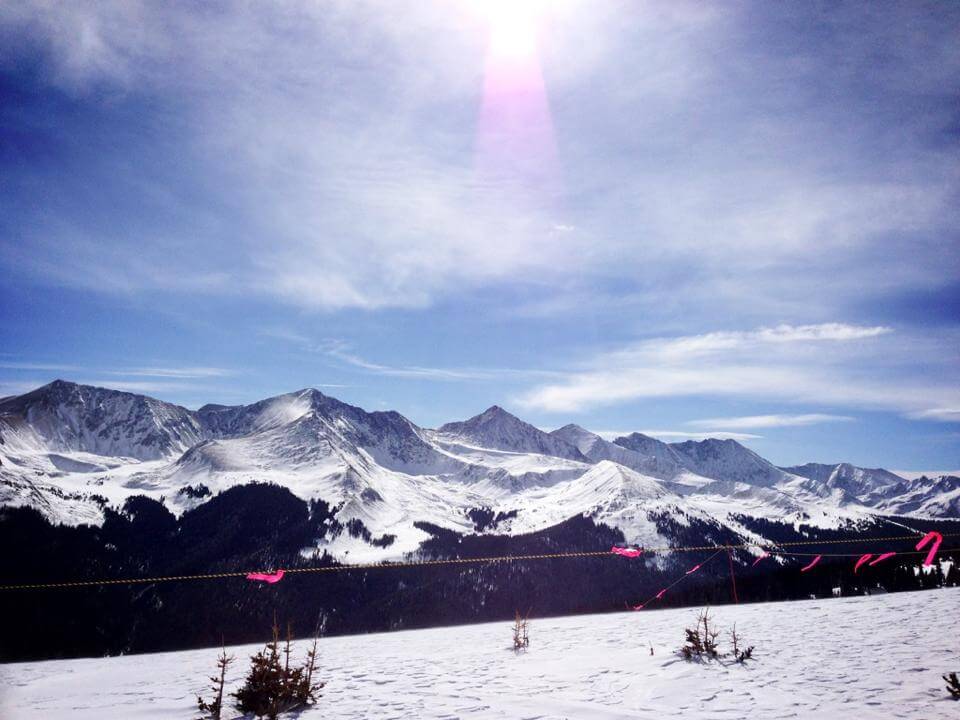How High-Altitude Training Provides Performance Benefits

How High-Altitude Training Provides Performance Benefits
By Vanessa Steigauf, Swimming World College Intern
The weeks prior to important competitions, you can sometimes find professional athletes in beautiful areas of Colorado or Utah. But they are for sure not there for a wellness vacation and fun hiking trips. Olympic swimmers like Michael Phelps, Ryan Murphy and Katie Ledecky, or professional distance runners including Emma Coburn and Galen Rupp, are only some of the many examples where athletes chose to get ready for their best performances far away from their homes. They travel to areas with high altitude to get in some training under more difficult conditions. These high-altitude training camps are common among professional endurance athletes all around the world. But why is it harder to train at higher elevations? And what causes that “natural boost” the athletes get from it?
The main factor that is attracting endurance athletes to high mountains is the lower amount of oxygen in the air. The higher you go, the lower the amount of O2, and the thinner the air which makes it harder for you to breathe. To understand how athletes can benefit from thin air and harder breathing conditions, let’s first take a look at how we use the oxygen in the air to generate energy.
O2 – How Oxygen Fuels Our Muscles
At least since we did our very first dolphin kicks under water as a child, we know how crucial oxygen is to our survival. Fortunately, we don’t have to remind our body of this oxygen deprived feeling all the time. Breathing is a fully automated process of our body that supplies our tissues with oxygen. Every time we breathe in, oxygen flows into our lungs. There, it diffuses across the membranes that separate lungs and blood vessels. Once the oxygen gets into our bloodstream, it binds to red blood cells via hemoglobin molecules. The red blood cells then function as transporters, distributing the oxygen throughout the whole body. Once it gets to capillaries in our tissues, it leaves the bloodstream to enter the surrounding cells. Those cells, which are usually muscle fibers, can now use the oxygen for cellular respiration. This process produces our main source of energy: ATP.
Effects of Low Oxygen Levels in High Elevation
This procedure works perfectly fine as long as we are at our usual altitude levels. As soon as we move up to higher elevations and oxygen levels drop, our body needs to compensate for the lower amounts of oxygen supply. Because we can’t just breathe way faster as usual to combat the altitude-induced hypoxia, our body replies in another way, altering the effectiveness of oxygen transport to the tissues. In higher altitudes, the production of the hormone erythropoietin by our kidneys is increased. This hormone, also called EPO, stimulates the production of red blood cells. Within some days of acclimatization to the higher altitude, our blood levels of red blood cells and therefore its capacity of carrying oxygen, increases. We can now supply our muscles with the same amount of oxygen, even if there is less oxygen available in the atmosphere.
Effects of High-Altitude Training on Athletic Performance
This increased blood-expanding effect can benefit athletes when they are back at normal altitude levels. At higher elevations (usually around 7,000 to 8,000 feet above sea level) their bodies got used to more efficiently using the low amounts of oxygen in the air. Back at lower elevations, they still have that “natural boost” in oxygen carrying capacity for around 10 to 20 days. The difference now is that there is way more oxygen available in the atmosphere.
Compared to other athletes that didn’t train at higher altitudes, the ones who just got back from the mountains will have more oxygen available to their muscles. This can improve their performance by around 1 to 2%. What sounds like a neglectable improvement can actually lead to significant drops in time over a range of event! Unfortunately, this performance boost only lasts for two to three weeks. About one month after returning to lower elevations, the red blood cell levels will adjust to the higher amounts of oxygen available again.
But What If There Are No Mountains Nearby?
How could athletes achieve the effect of high altitudes without actually having to travel to the mountains? Some athletes include sleeping in hypoxia sleep chambers or practicing in high-altitude rooms into their routine. These tools help to naturally stimulate EPO production and are, therefore, like high-altitude training itself. In contrast, there have been cases where athletes artificially increased EPO and red blood cell levels through injections. This is considered blood doping which is not a legal way of performance improvement.
But keep one thing in mind before you pack your bags and head to the nearest mountain to get some high-altitude training in: the performance improvements are mostly observed in world-class level athletes. An already small drop in times of 1-2% will most likely not occur in collegiate or recreational athletes. And even if it would work out, the use of high-altitude training is thought more for professional athletes. They are already exhausting their possibilities and are looking for a way to legally improve their performances even further.
All commentaries are the opinion of the author and do not necessarily reflect the views of Swimming World Magazine nor its staff.



